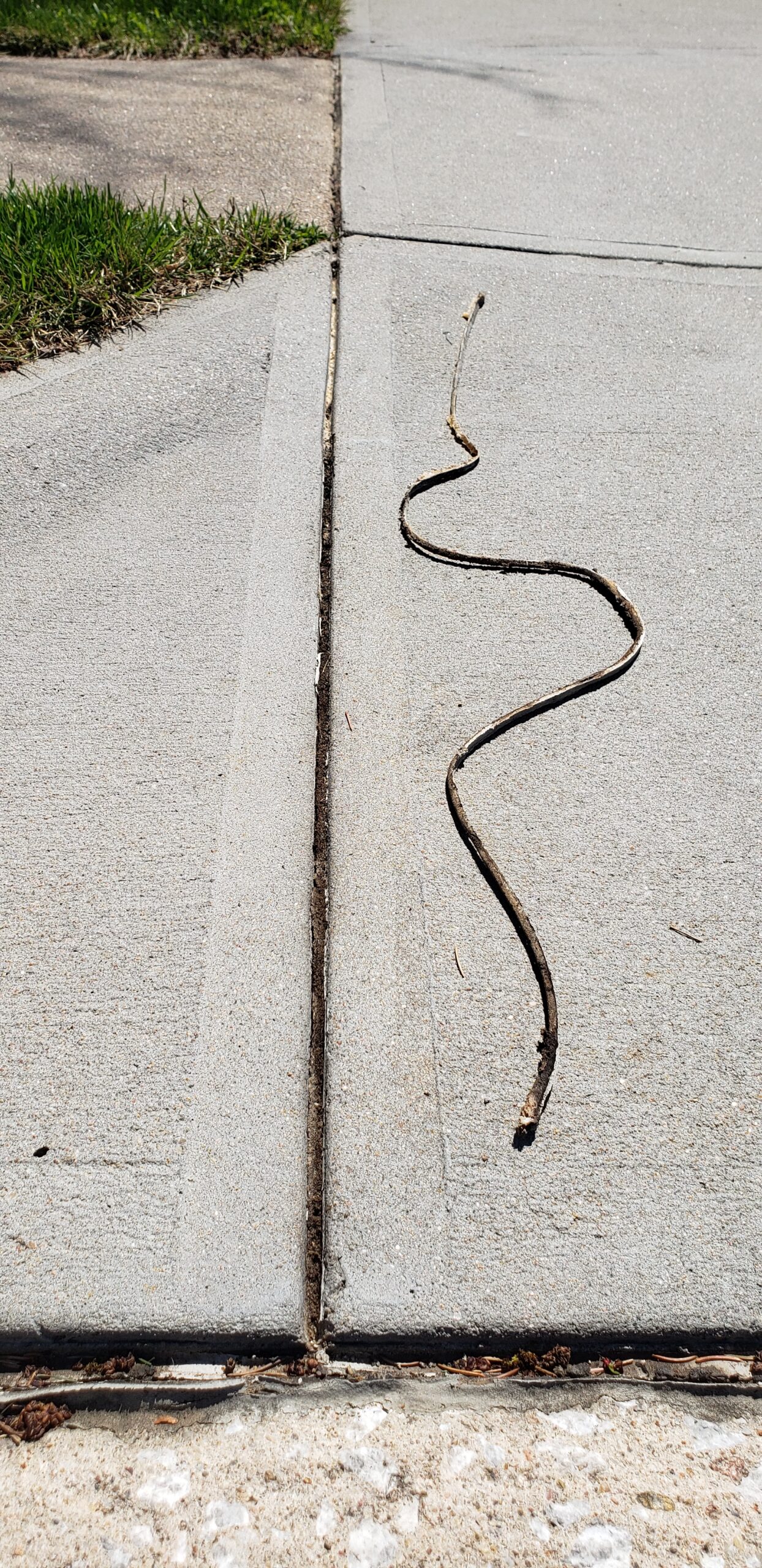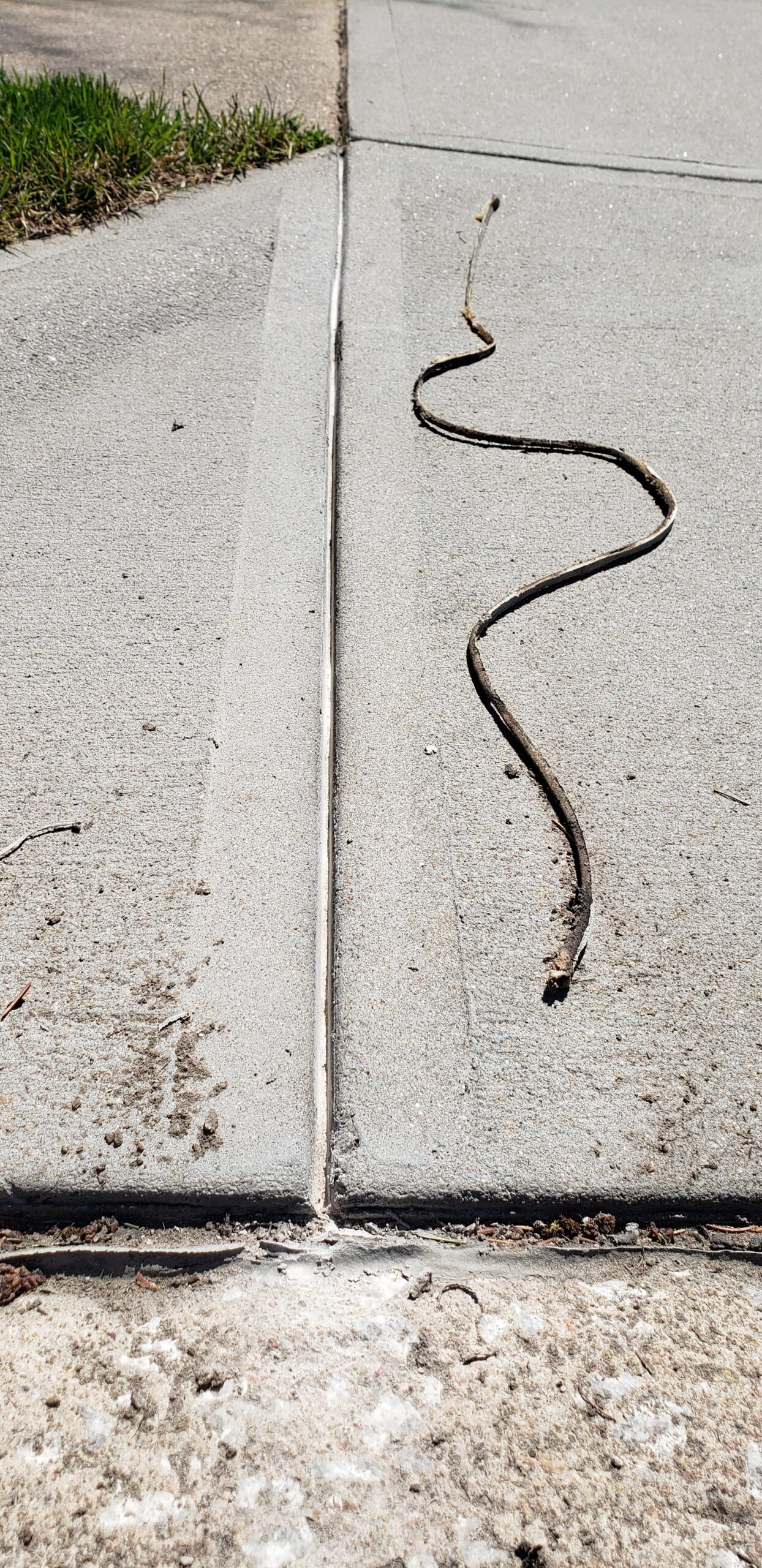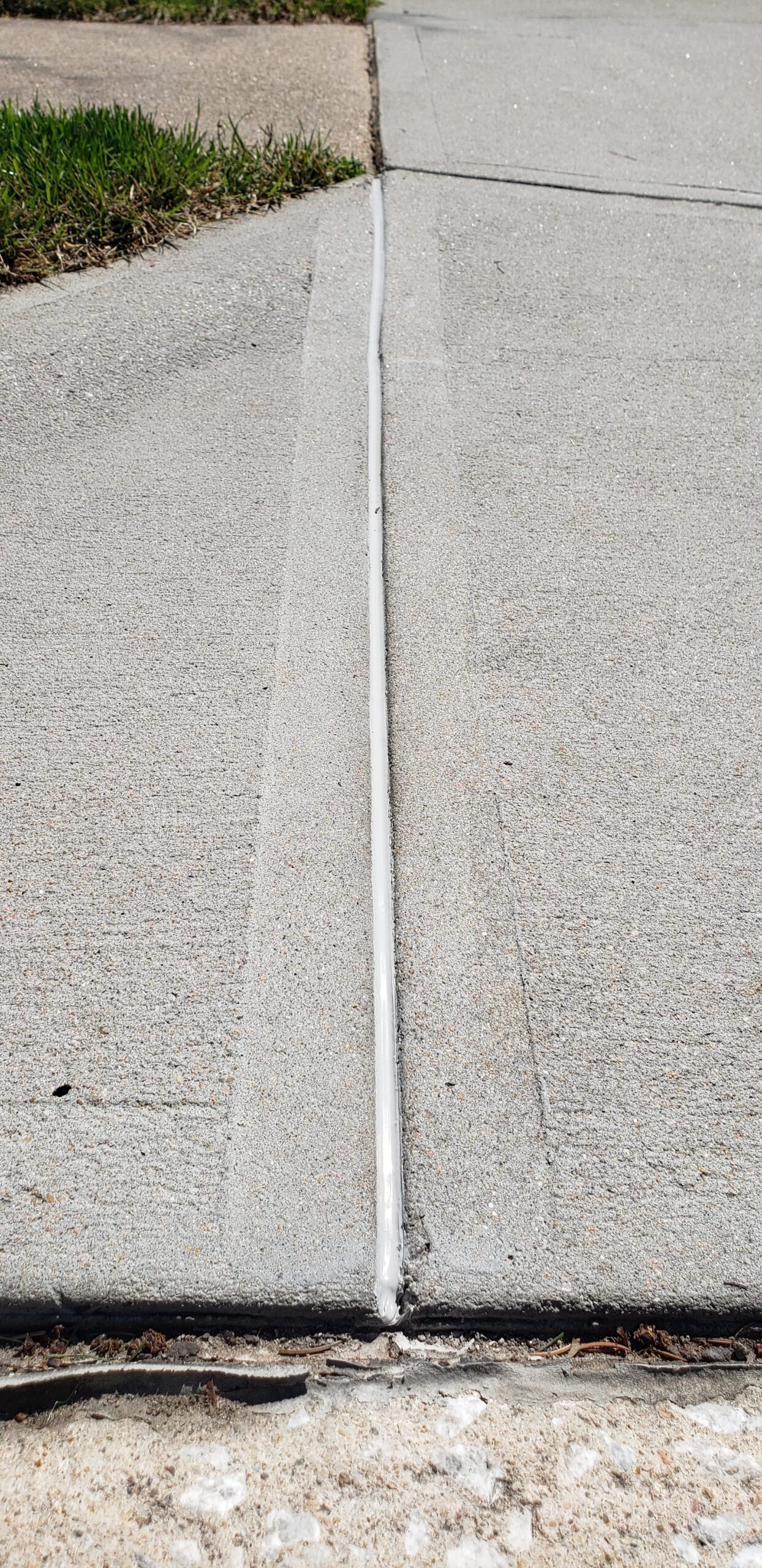Caulking
Concrete Caulking of Cracks and Joints
Caulking is one of the best ways to extend the life of your concrete and maintain the integrity of the concrete slabs.Concrete caulking is an important part of maintaining your concrete that will help make sure it stays functioning the way it should for decades.
Concrete caulking is the process of applying a silicone caulk or polymer caulk to the relief joints/saw cuts and expansion joints in concrete in order to prevent further cracking or other sources of damage. Thus helping to maintain the integrity of the concrete.
Sealing a concrete surface with a penetrating concrete sealer, it is commonly done after the caulking process is complete. Although it can also be done separately based on the customer's preference.
Concrete caulking is important because it helps prevent the effects from the following naturally-occurring factors:
Water effects concrete
Concrete caulking prevents water from seeping beneath the driveway slabs and washing away the soil layer on which the concrete rests. When water penetrates beneath the slabs, it can displace the soil layer and create unevenness. Moreover, water trapped beneath the slabs during the freeze-thaw cycle can cause heaving and cracking of the slab.
Concrete Sealing-Freeze-Thaw Cycles
If water seeps into the pores of concrete and freezes, it will expand and rupture the pores, eventually leading to surface damage and cracking. Concrete sealing involves a chemical process that closes the pores, which helps to prevent such damage.
Weeds
The process of sealing cracks in concrete can also hinder the growth of weeds and plants within the joints.
Initially, the joints are cleared of debris or old caulk. If the crack exceeds 3/4 inch in width and 1 inch in depth, a filler poly rod is placed before using a self-leveling caulking in these areas.
Subsequently, the caulk is added to the crack, kept slightly below the concrete slab's top to minimize wear and tear due to foot traffic or vehicle tires. In cases where the concrete is older or has cut joints, masking is necessary to ensure a straight caulked edge.
After applying the caulk, it is smoothed out. Typically, hand smoothing is performed, resulting in a tapered, finished appearance to the caulked joint. However, this may differ depending on the product being utilized. It is important to avoid walking or driving over it for at least 24 hours until it is skin over-cured.
Concrete caulking is a recommended maintenance practice for those who:
- Wish to extend the lifespan of their concrete
- Have existing fractures they wish to seal and prevent from worsening
- Want to prevent water erosion from causing their concrete to settle
- Reside in regions that experience multiple freeze-thaw cycles during winter.
Overall, concrete caulking is an effective means of preserving concrete's beauty and structural integrity for an extended period. Adequate care of the concrete can add many years or even decades to its lifespan. If you believe this is something you require, please contact us for a free analysis and estimate.
- Silicones are UV light stable. Organic (urethane or polyurethane) products are not and break down in sunlight. This is because UV does not have enough energy to cleave the SI-O, silicone bond. However, C-C bonds used in organic materials are very unstable. UV weathering is the main cause of sealant degradation.
- Silicones do not get hard when they're cold, organics products do. This causes adhesive failures in organic products even when adhesion looks good after a pull test. Note that the most important time for a sealant to work in the winter (as building substrates shrink and joints therefore get wider), which is exactly when organics have hardened.
- Silicones maintain flexibility over time, organic products lose flexibility with aging.
- Silicones can be applied at -20°F (-29°C) without heating and will cure compared to organic sealants which need to be heated and will not cure unless they are above freezing.
- Silicones do not slump on hot days in the summer, polyurethanes tend to slump when hot.
- Silicones skin over on average in 30 minutes versus 1-14 days for organic sealants, allowing the organic materials to pick-up more job site dirt. This dirt is embedded in the sealant permanently. Any dirt deposited on a silicone surface is easily cleaned away, even after years of build-up. Again, this is because silicone is basically a flexible Si-O (glass).
- As organic sealants break down they crack, craze, split and chalk. Dirt can get embedded in the cracks easily. Silicone surfaces do not degrade.
- Silicones last for 50+ years. This is because a silicone is basically glass. Just like you would not expect a pane of glass to melt after 20 or 30 years, neither will a silicone. Organic sealants begin to break down in 3-7 years. Where they are exposed to the most sunlight, like the south side of a building, they will break down faster. Urethanes can be thought of like paint in regard to weathering.
- All our silicones (795, 792, 756, CWS, CCS) are independently tested and validated by SWRI (Sealant Weatherproofing and Restoration Institute). Please visit their web site at www.swrionline.org and note that all manufactures are part of SWRI but not all products are validated.
- Silicones are non-staining on granite marble and limestone. Staining of sealants is an overblown issue as no sealants will stain brick or concrete or metals as these materials do not have the pour structure capillary action that pulls fluids out of sealants.
- Silicones are commonly used in re-caulking applications where urethanes were used previously.
- Pull test for sealant performance and substrate preparation are important. However, silicones can often take 28 days at 68°F (20°C) and 80% RH to develop full adhesion. Just because a silicone is a cured solid DOES NOT mean that full adhesion set has occurred. Urethanes often have quick green strength (initial adhesion) but don’t be confused into thinking they have better overall adhesion in a dynamic joint. This is because a urethane MUST have better adhesion due to their poor performance in cold weather and the high bondline stresses they create. This is the reason that silicones have lower adhesive failure rates.
- Urethanes and polyurethanes have drastically altered formulas since 2009 when they because to change their chemicals to meet new VOC guidelines. Also, many chemicals used in sealant production have changed (due to stricter environmental regulations) or discontinued production (US recession and Japanese tsunami). Dow has virtually full vertical integration with many products. Common silicone sealant formulas, due to their inherently low VOC, have not changed in decades. It many seem odd to have a formula that has not changed in years, but in a low margin market where competitors have cheapened their sealants considerably, Dow products remain an unthinned option with a proven track record.




